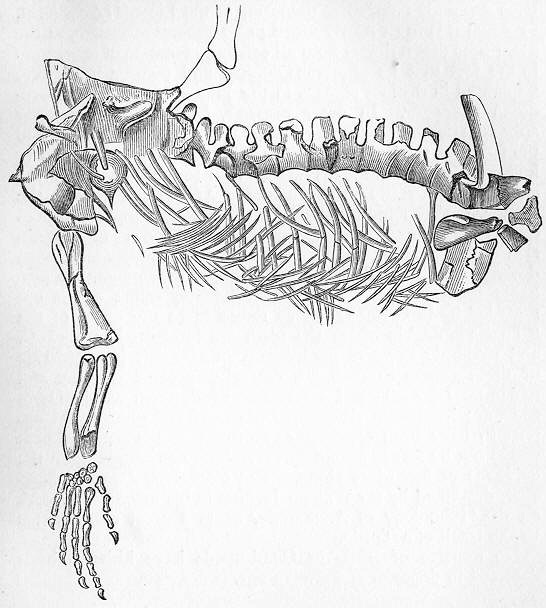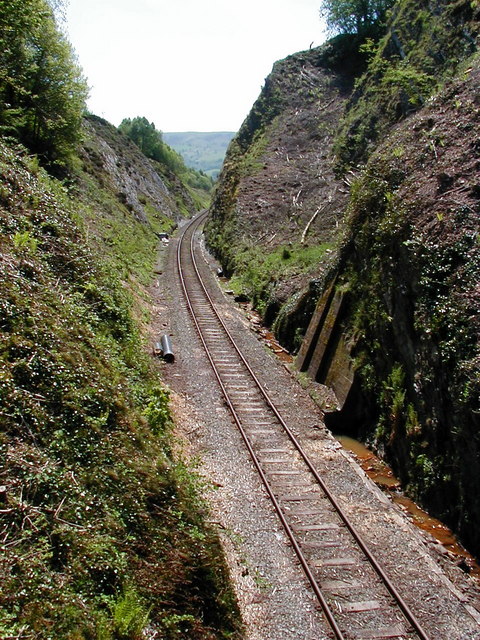|
Protorosaurus Speneri
''Protorosaurus'' ("first lizard") is a genus of lizard-like early reptiles. Members of the genus lived during the late Permian period in what is now Germany and Great Britain. Once believed to have been an ancestor to lizards, ''Protorosaurus'' is now known to be one of the oldest and most primitive members of Archosauromorpha, the group that would eventually lead to archosaurs such as crocodilians and dinosaurs. Description ''Protorosaurus'' grew up to in length, and was a slender, lizard-like animal, vaguely resembling a monitor lizard, with long legs and a long neck. Discovery ''Protorosaurus'' was one of the first fossil reptiles to be described, being initially described in Latin in 1710 by from a specimen found in Thuringia in Germany, who considered the animal to be a crocodile, and most similar to the Nile crocodile (''C. niloticus''). Over a century later, in publications in 1830 and 1832 Hermann von Meyer recognised ''Protorosaurus'' as distinct extinct re ... [...More Info...] [...Related Items...] OR: [Wikipedia] [Google] [Baidu] |
Lopingian
The Lopingian is the uppermost series/last epoch of the Permian. It is the last epoch of the Paleozoic. The Lopingian was preceded by the Guadalupian and followed by the Early Triassic. The Lopingian is often synonymous with the informal terms late Permian or upper Permian. The name was introduced by Amadeus William Grabau in 1931 and derives from Leping, Jiangxi in China. It consists of two stages/ages. The earlier is the Wuchiapingian and the later is the Changhsingian. The International Chronostratigraphic Chart (v2018/07) provides a numerical age of 259.1 ±0.5 Ma. If a Global Boundary Stratotype Section and Point (GSSP) has been approved, the lower boundary of the earliest stage determines numerical age of an epoch. The GSSP for the Wuchiapingian has a numerical age of 259.8 ± 0.4 Ma. Evidence from Milankovitch cycles suggests that the length of an Earth day during this epoch was approximately 22 hours. The Lopingian ended with the Permian–Triassic extinctio ... [...More Info...] [...Related Items...] OR: [Wikipedia] [Google] [Baidu] |
Thomas Henry Huxley
Thomas Henry Huxley (4 May 1825 – 29 June 1895) was an English biologist and anthropologist specialising in comparative anatomy. He has become known as "Darwin's Bulldog" for his advocacy of Charles Darwin's theory of evolution. The stories regarding Huxley's famous 1860 Oxford evolution debate with Samuel Wilberforce were a key moment in the wider acceptance of evolution and in his own career, although some historians think that the surviving story of the debate is a later fabrication. Huxley had been planning to leave Oxford on the previous day, but, after an encounter with Robert Chambers, the author of '' Vestiges'', he changed his mind and decided to join the debate. Wilberforce was coached by Richard Owen, against whom Huxley also debated about whether humans were closely related to apes. Huxley was slow to accept some of Darwin's ideas, such as gradualism, and was undecided about natural selection, but despite this he was wholehearted in his public support of D ... [...More Info...] [...Related Items...] OR: [Wikipedia] [Google] [Baidu] |
Protorosaurus Skull Diagram
''Protorosaurus'' ("first lizard") is a genus of lizard-like early reptiles. Members of the genus lived during the late Permian period in what is now Germany and Great Britain. Once believed to have been an ancestor to lizards, ''Protorosaurus'' is now known to be one of the oldest and most primitive members of Archosauromorpha, the group that would eventually lead to archosaurs such as crocodilians and dinosaurs. Description ''Protorosaurus'' grew up to in length, and was a slender, lizard-like animal, vaguely resembling a monitor lizard, with long legs and a long neck. Discovery ''Protorosaurus'' was one of the first fossil reptiles to be described, being initially described in Latin in 1710 by from a specimen found in Thuringia in Germany, who considered the animal to be a crocodile, and most similar to the Nile crocodile (''C. niloticus''). Over a century later, in publications in 1830 and 1832 Hermann von Meyer recognised ''Protorosaurus'' as distinct extinct reptile ... [...More Info...] [...Related Items...] OR: [Wikipedia] [Google] [Baidu] |
Marl Slate
The Marl Slate Formation is a geological formation in England. Despite its name, it is mostly dolomite rock. The Marl Slate Formation was formed about 273 to 259 million years ago, during the Guadalupian and Lopingian epochs of the late Permian period of the Earth's geological history. This formation is part of the Zechstein Group of rocks, and is equivalent to the Kupferschiefer of Germany. The Marl Slate Formation contains fossils including the conodont '' Mesogondolella britannica'' and the dorypterid fishes '' Dorypterus'' and ''Lekanichthys'', as well as the gliding reptile '' Weigeltisaurus'' and terrestrial reptile '' Protorosaurus'' The Marl Slate Formation outcrops in County Durham County Durham ( ), officially simply Durham,UK General Acts 1997 c. 23Lieutenancies Act 1997 Schedule 1(3). From legislation.gov.uk, retrieved 6 April 2022. is a ceremonial county in North East England.North East Assembly �About North East E ... and Yorkshire in north-east Eng ... [...More Info...] [...Related Items...] OR: [Wikipedia] [Google] [Baidu] |
County Durham
County Durham ( ), officially simply Durham,UK General Acts 1997 c. 23Lieutenancies Act 1997 Schedule 1(3). From legislation.gov.uk, retrieved 6 April 2022. is a ceremonial county in North East England.North East Assembly �About North East England. Retrieved 30 November 2007. The ceremonial county spawned from the historic County Palatine of Durham in 1853. In 1996, the county gained part of the abolished ceremonial county of Cleveland.Lieutenancies Act 1997 . Retrieved 27 October 2014. The is the of [...More Info...] [...Related Items...] OR: [Wikipedia] [Google] [Baidu] |
Middridge
Middridge is a village in County Durham, North East England. It is situated east of Shildon and north-west of Newton Aycliffe. The village is situated near a quarry that was mined by the people many generations ago. There is one public house in the village: the Bay Horse. History Following the fall of the Roman Empire, the Angles arrived in the area around 500 AD and created several settlements, including Middridge. The name "Middridge" is derived from its location at that time on the "middle ridge" between Eldon and School Aycliffe (near the current Aycliffe golf course). Anglo-Saxon Middridge lasted for five hundred years before being destroyed by the Normans during William the Conqueror's Harrying of the North. Those who survived this massacre (and the resulting disease and starvation) were enslaved by the invaders. They were forced by the Bishop of Durham to toil in the surrounding fields as serfs, and forcibly relocated to gloomy huts centred on the village green. The ... [...More Info...] [...Related Items...] OR: [Wikipedia] [Google] [Baidu] |
Cut (earthworks)
In civil engineering, a cut or cutting is where soil or rock from a relative rise along a route is removed. The term is also used in river management to speed a waterway's flow by short-cutting a meander. Cuts are typically used in road, rail, and canal construction to reduce the length and grade of a route. Cut and fill construction uses the spoils from cuts to fill in defiles to cost-effectively create relatively straight routes at steady grades. Cuts are used as alternatives to indirect routes, embankments, or viaducts. They also have the advantage of comparatively lower noise pollution than elevated or at-grade solutions. History The term ''cutting'' appears in the 19th century literature to designate rock cuts developed to moderate grades of railway lines. ''Railway Age's Comprehensive Railroad Dictionary'' defines a cut as "a passage cut for the roadway through an obstacle of rock or dirt." Creation Cuts can be created by multiple passes of a shovel, ... [...More Info...] [...Related Items...] OR: [Wikipedia] [Google] [Baidu] |
Chasmosaurus
''Chasmosaurus'' ( ) is a genus of ceratopsid dinosaur from the Upper Cretaceous Period of North America. Its name means 'opening lizard', referring to the large openings (fenestrae) in its frill (Greek ''chasma'' meaning 'opening' or 'hollow' or 'gulf' and ''sauros'' meaning 'lizard'). With a length of and a weight of , ''Chasmosaurus'' was a ceratopsian of average size. Like all ceratopsians, it was purely herbivorous. It was initially to be called ''Protorosaurus'', but this name had been previously published for another animal. All specimens of ''Chasmosaurus'' were collected from the Dinosaur Park Formation of the Dinosaur Provincial Park of Alberta, Canada. Referred specimens of ''C. russelli'' come from the lower beds of the formation while ''C. belli'' comes from middle and upper beds. Discovery and species In 1898, at ''Berry Creek'', Alberta, Lawrence Morris Lambe of the Geological Survey of Canada made the first discovery of ''Chasmosaurus'' remains; holotype NM ... [...More Info...] [...Related Items...] OR: [Wikipedia] [Google] [Baidu] |
Torosaurus
''Torosaurus'' ("perforated lizard", in reference to the large openings in its frill) is a genus of herbivorous ceratopsid dinosaur that lived during the late Maastrichtian stage of the Cretaceous period, between 68 and 66 million years ago, though it is possible that the species range might extend to as far as 69 million years ago.*Hicks, J.F., Johnson, K.R., Obradovich, J. D., Miggins, D.P., and Tauxe, L. 2003. Magnetostratigraphyof Upper Cretaceous (Maastrichtian) to lower Eocene strata of the Denver Basin, Colorado. In K.R. Johnson, R.G. Raynolds and M.L. Reynolds (eds), Paleontology and Stratigraphy of Laramide Strata in the Denver Basin, Pt. II., Rocky Mountain Geology 38: 1-27. Fossils have been discovered across the Western Interior of North America, from Saskatchewan to southern Texas. ''Torosaurus'' possessed one of the largest skulls of any known land animal, with the frilled skull reaching in length. ''Torosaurus'' is thought to have been the same size as the contemp ... [...More Info...] [...Related Items...] OR: [Wikipedia] [Google] [Baidu] |
Lawrence Lambe
Lawrence Morris Lambe (August 27, 1863 – March 12, 1919) was a Canadian geologist, palaeontologist, and ecologist from the Geological Survey of Canada (GSC). His published work, describing the diverse and plentiful dinosaur discoveries from the fossil beds in Alberta, did much to bring dinosaurs into the public eye and helped usher in the ''Golden Age of Dinosaurs'' in the province. During this period, between the 1880s and World War I, dinosaur hunters from all over the world converged on Alberta. ''Lambeosaurus'', a well-known hadrosaur, was named after him as a tribute, in 1923. In addition to paleontology, Lambe discovered a number of invertebrate species ranging from Canada to the Pacific Northwest. Lambe's contemporary discoveries were published in works such as ''Sponges From the Atlantic Coast of Canada'' and ''Catalogue of the recent marine sponges of Canada and Alaska''. Early life and education Lambe was born in Montreal on August 27, 1863. Lambe studied at the Ro ... [...More Info...] [...Related Items...] OR: [Wikipedia] [Google] [Baidu] |
Ceratopsian
Ceratopsia or Ceratopia ( or ; Greek: "horned faces") is a group of herbivorous, beaked dinosaurs that thrived in what are now North America, Europe, and Asia, during the Cretaceous Period, although ancestral forms lived earlier, in the Jurassic. The earliest known ceratopsian, '' Yinlong downsi'', lived between 161.2 and 155.7 million years ago.Holtz, Thomas R. Jr. (2011) ''Dinosaurs: The Most Complete, Up-to-Date Encyclopedia for Dinosaur Lovers of All Ages,'Winter 2010 Appendix./ref> The last ceratopsian species, '' Triceratops prorsus'', became extinct during the Cretaceous–Paleogene extinction event, . ''Triceratops'' is by far the best-known ceratopsian to the general public. It is traditional for ceratopsian genus names to end in "''-ceratops''", although this is not always the case. One of the first named genera was ''Ceratops'' itself, which lent its name to the group, although it is considered a ''nomen dubium'' today as its fossil remains have no distinguishing char ... [...More Info...] [...Related Items...] OR: [Wikipedia] [Google] [Baidu] |





